|
|
2004.9-10
La Bohème |
Music by Giacomo Puccini(1896)
Libretto by Giuseppe Giacosa / Luigi Illica
OPERA HOUSE
5 performances
September 25(Sat)5:00pm, 28(Tue)6:30pm, October 3(Sun)3:00pm,
6(Wed)6:30pm, 9(Sat)3:00pm 2004
Approximate running time: 2 hours, 50 minutes with 2 intermissions |
| Conductor: Inoue Michiyoshi
Director: Aguni Jun
Scenery Design: Pasquale Grossi
Costume Design: Alessandro Ciammarughi
<MAIN CAST>
Mimi: Adina Nitescu
Musetta: Mizushima Ikumu
Rodolfo: James Valenti
Marcello: Karl-Magnus Fredriksson
Colline: Xiaoliang Li
|
|
| |
| Background |
| La Bohème (Bohemian Life) is a sweet yet poignant
eternal youth opera, which Puccini, who suddenly became ranked among
the leading opera composers with the success of Manon Lescaut
(premiered 1893), created together with the librettist Illica and
the poet Giacosa. This collaboration of artists produced a number
of masterpieces in subsequent years. La Bohème is
based on Scenes de la vie de Bohème (Scenes of Bohemian
Life), a novel by Henri Murger, who was active in France in the middle
of the 19th century. The complexity of the original novel made it
extremely difficult to adapt it for an opera libretto, but Illica
and Giacosa successfully put together the lives of Parisian youths
in those days into a four-act (introduction, development, turn and
conclusion) opera by adding the story of pure love between the poet
Rodolfo and the seamstress Mimì to provide a skeletal structure
for the opera, while making the couple, the artist Marcello and his
lover Musetta, contrast with Rodolfo and Mimì. Each character
is depicted vividly and delicately with realism and, along with Tosca
and Madama Butterfly, La Bohème is said
to be one of Puccini’s three principal operas. It was first
performed at the Teatro Reggio in Turin in 1896 under the baton of
Toscanini, who was then 28 years old. The sound of chords rarely heard
until then and the overlapping motifs were new endeavors, yet the
sophisticated level of the opera was soon recognized, and partly because
of the effects of its moving story, it became one of the most popular
operas among audiences worldwide almost overnight. In its NNTT premiere
in 2003, the director Aguni Jun effectively used a sheer silk screen
and stage setting to enable the audience to look at the stage as if
it commanded a bird’s eye view of the city of Paris, with the
directing of the moving last scene of the ill-fated heroine highly
rated. |
| Synopsis |
| The setting is the Latin Quarter of Paris, circa 1830. On Christmas
Eve, the painter Marcello and the poet Rodolfo gather in their garret
and are soon joined by the philosopher Colline. The musician Schaunard
also comes, bearing food. As his companions go out, Rodolfo remains
behind to finish an article he is writing and meets Mimì, who
knocks at the door to ask for a light for her candle. The two quickly
fall in love. The crowds gather at the Café Momus. Mimì,
wearing a new bonnet Rodolfo has just bought for her, is introduced
to his friends. Musetta appears accompanied by her elderly admirer
Alcindoro, but seeing her former lover Marcello, she attracts his
attention and leaves with him. A few weeks later, Mimì and
Rodolfo quarrel and Mimì asks Marcello to advise her, but she
overhears Rodolfo saying that he can no longer live with Mimì.
He also knows that she is dying from consumption. The couple agree
to part when spring comes. Back in the garret, Rodolfo and Marcello
contemplate the women they have left. Shortly after, Colline and Schaunard
enter, Musetta arrives to say that Mimì has left her rich admirer
and is critically ill. Mimì wants to spend her last hours with
Rodolfo. She is brought in and she and Rodolfo embrace each other
but she soon dies. Left alone, he throws himself, sobbing, over her
body. |
|
| |
| |
<Conductor> |
|
<Director> |
|
|
|
 |
|
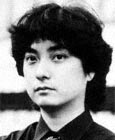 |
|
|
|
Inoue Michiyoshi |
|
Aguni Jun |
|
| <Main Cast> |
| |
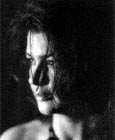 |
|
 |
|
| |
Adina Nitescu |
|
Mizushima Ikumu |
|
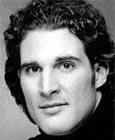 |
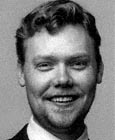 |
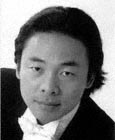 |
| James Valenti |
Karl-Magnus Fredriksson |
Xiaoliang Li |
|






